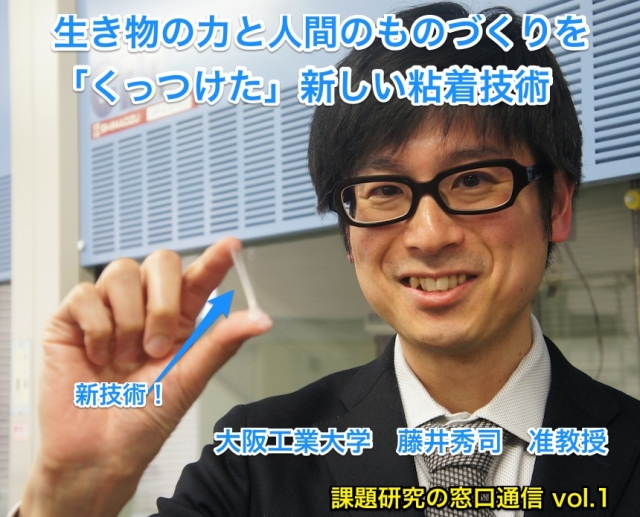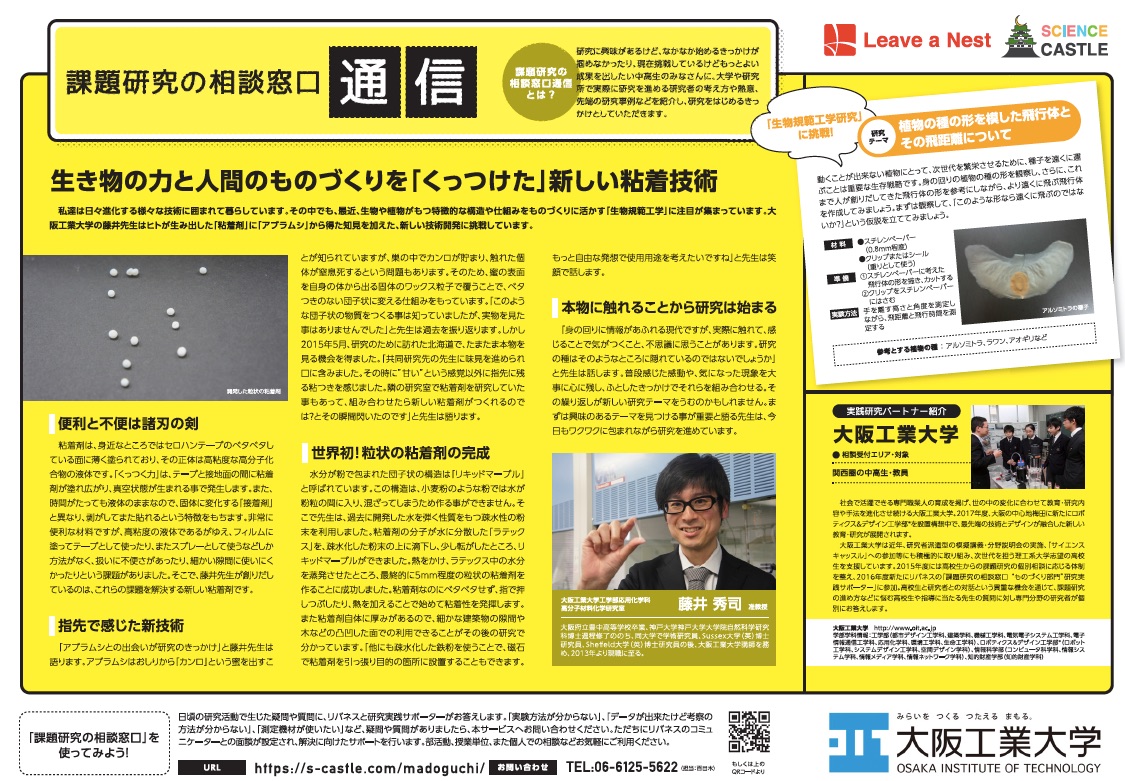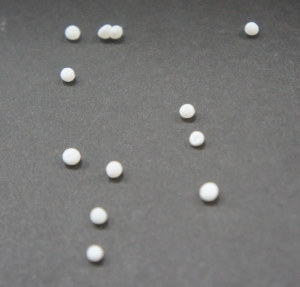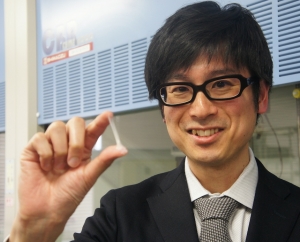- Notice
- over the counter communication
- Consultation Service for Proposed Research
- Notice of Kansai Conference
Issue Research Consultation News Letter (April 28, 2016) "New Adhesive Technology 'Attached' to the Power of Living Things and Human Manufacturing."
2016.07.08
.
Please download the PDF file for examples of research topics related to your field of study.
Subject Research Consultation Service Communication 01 (1527 downloads)

pdf file image (please print and post in A3)
We live surrounded by a variety of technologies that are evolving every day. Among them, "bio-normative engineering," which makes use of the characteristic structures and mechanisms of living organisms and plants in manufacturing, has recently been attracting attention.
Dr. Fujii of Osaka Institute of Technology is taking on the challenge of developing a new technology by adding knowledge gained from "aphids" to the "adhesive" created by humans.
Adhesion is a double-edged sword
Adhesive is thinly coated on the sticky side of cellophane tape in familiar places, and its true nature is a highly viscous high molecular compound liquid. The "sticking power" is caused by the wetting and spreading of the adhesive between the tape and the ground surface. Since the adhesive remains liquid over time, it can be peeled off and reapplied, unlike "glue," which turns solid. It is a very convenient material, but because it is a highly viscous liquid, the only way to use it is to apply it to a film and use it as a tape or as a spray. Dr. Fujii has created a new adhesive that solves these problems.
New technology at your fingertips
Dr. Fujii says, "My encounter with aphids was the catalyst for my research. Aphids are known to produce nectar called "nectar dew" from their hips, but there is a problem of nectar accumulating in the hive and causing mold. Therefore, the nectar surface is covered with solid wax particles produced by the bird's own body, which transforms the nectar into a non-sticky dumpling-like substance. I knew that this kind of dumpling substance was produced, but I had never seen it in person," he recalls. However, when he visited Hokkaido for research, he had a chance to see the real thing. A professor who was researching aphids with whom he was collaborating recommended that I taste it, and I did. I tasted it, and besides the "sweet" sensation, I felt a stickiness that lingered on my fingertips. I had been studying adhesives in my laboratory, and it flashed on me that a new adhesive could be created by combining the two," says the professor. I was inspired by this idea.
World's first! Completion of granular adhesive
A dumpling-like structure in which water is encased in flour is called a "liquid marble. This structure cannot be created with powders such as flour because water would get in between the powder grains and mix with them. Therefore, the professor used a hydrophobic powder with water-repelling properties that he had developed in the past. When "latex," in which adhesive molecules are dispersed in water, was dropped onto the hydrophobic powder and rolled slightly, a liquid marble was created. When the water in the latex evaporated, we finally succeeded in creating a millimeter-sized granular adhesive. Despite being an adhesive, it is not sticky and only becomes tacky when crushed with fingers or kneaded between objects. In addition, the adhesive itself is thick, so subsequent research has shown that it can be used to adhere to fine gaps in buildings and uneven surfaces such as wood. In addition, by using hydrophobic iron powder, the adhesive can be pulled by a magnet to the desired location. I would like to think of more flexible applications," he says with a smile.

Granular adhesive developed
Research begins with exposure to the real thing.
In this age of information overload, there are things we notice and wonder about by actually touching and feeling things," he says. I believe that the seeds of research are hidden in such places. I treasure the impressions I feel and the phenomena that interest me, and combine them when the opportunity arises. The repetition of this process may give birth to new research themes. He says it is important to first find a theme that interests you, and today he continues his research with excitement.
| <The teacher we interviewed
Department of Applied Chemistry, Faculty of Engineering, Osaka Institute of Technology |

Note the teacher's right hand. The newly developed adhesive is stretched by applying pressure. |
| Research Practice Partner Universities Manufacturing DivisionOsaka Institute of Technology |
| Teachers who have registered as "Education Support Teachers" will receive the latest Science Bridge News every Tuesday as a PDF file edited into an easy-to-use wall newspaper format for use in schools. For more details, please click here ⇒.Science Bridge News for School |
.
Please download the PDF file for examples of research topics related to your field of study.
Subject Research Consultation Service Communication 01 (1527 downloads)
